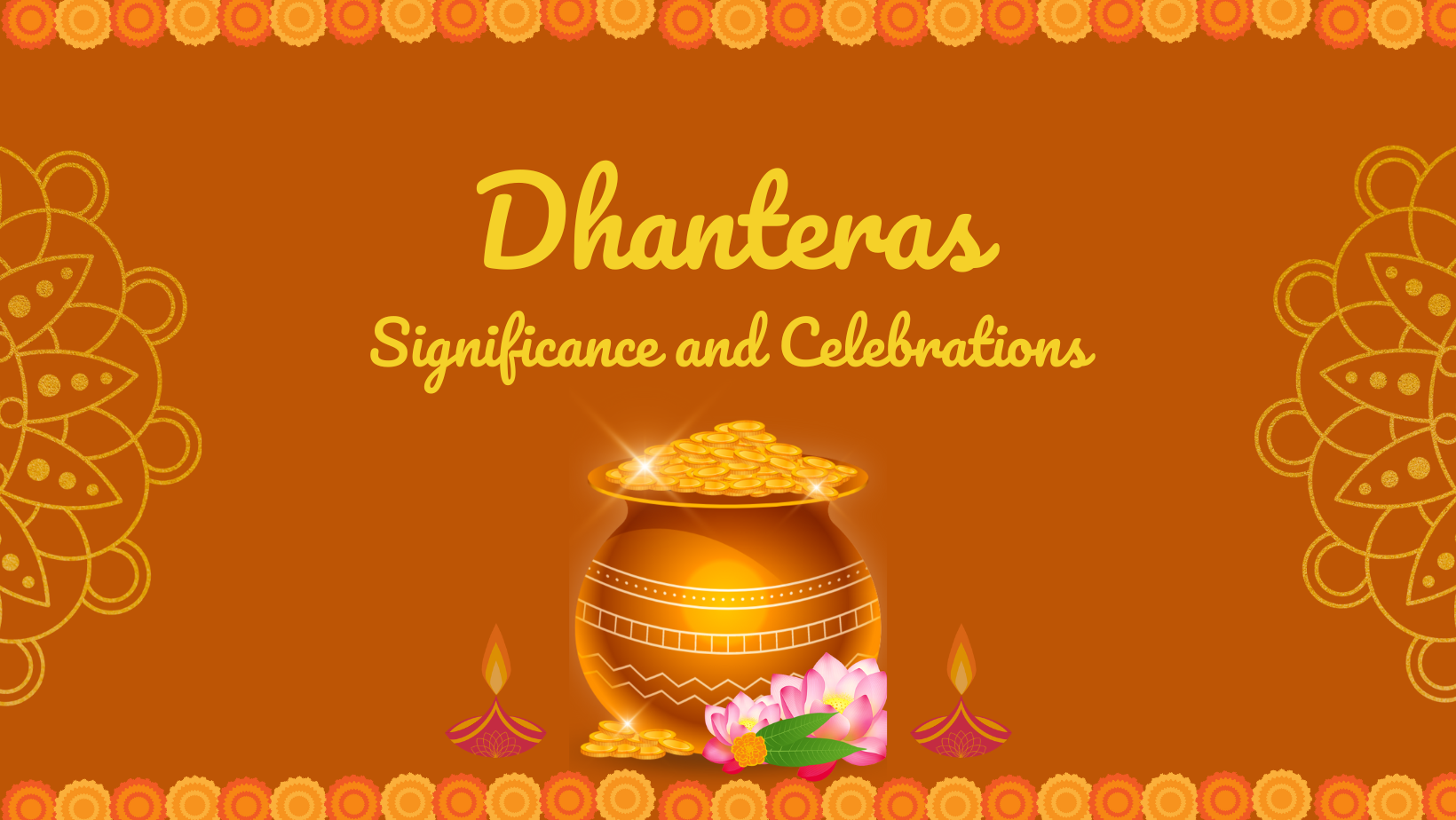

Why Do We Celebrate Dhanteras? 5 Interesting Legends Related to Dhanteras
India celebrates hundreds of festivals every year and one of the most popular ones of them is Dhanteras. Dhanteras, also known as Dhanavantri Trayodashi and Dhanatrayodashi, is the day on which Diwali festivities officially begin in India. It occurs on the 13th lunar day (Trayodashi Tithi) of Krishna Paksha, also known as the Dark Fortnight. Dhanteras festival is considered auspicious for purchasing metals and hence, people buy utensils, jewellery, cars, and home/kitchen appliances on this day. Also, devotees offer prayers to Goddess Lakshmi for joy, fortune, and prosperity.
The shopping factor makes it one highly interesting festival among all Hindu festivities. However, there are several tales, myths, and legends that surround this occasion and are equally fascinating. Today, we are going to share with you a few tales that are the primary reasons behind the Dhanteras celebrations.
1) Samudra Manthan
The Dhanteras festival is related to a well-known Samdra Manthan tale. According to this one, the churning of the Milky Ocean, also known as Samudra Manthan or Amrit Manthan, resulted in the discovery of numerous riches, including ‘Amrit‘, a powerful liquid that when consumed rendered people immortal.
In order to get this nectar, there began a churning between the Gods and the Asuras. After the curing of the ocean, Dhanavantari, a manifestation of Vishnu and the gods’ physician, who had prepared this nectar made an appearance carrying a pitcher of nectar from Samudra Manthan. This appearance occurred on the day of Dhanteras and people celebrate this day as the symbol of getting the holy nectar.
2. The King Hima Story
The story of King Hima, a sixteen years old ruler, is another fascinating tale related to this day.
His horoscope predicted that he would pass away from a snake bite on the fourth day of his marriage. On the fourth day of their marriage, King Hima’s young wife wouldn’t let him sleep. In the hallway leading to her bedroom, she piled up bundles of gold and silver coins and ignited countless lights all around. She also carried on singing songs and recounting stories so that Hima couldn’t fall asleep.
The brightness of the light blinded Yama (the deity of death) when he appeared as a serpent. The serpent was unable to enter the king’s room. He climbed over the stack of coins and then spent the entire evening sitting and listening to the lovely music.
The serpent, or Lord Yama, had no choice but to depart as morning broke on the previous night. In this way, King Hima’s faithful wife was able to preserve his life. Since then, this Dhanteras day has been referred to as “Yamadeepdaan” and lights are kept on all night long in remembrance of Yam, the deity of death.
3. The Laxmi Goddess’s Story
In India, young girls are seen as the Goddess Lakshmi entering the home on Dhanteras Day and are considered lucky by some communities in North India. When young women who were born on Dhanteras are married and depart for their husbands’ homes, they are supposed to leave their footprints on a plate covered with “kumkum” (the crimson powder used in Hindu puja), in order to prevent Goddess Lakshmi from leaving.
4. The Legend of Lord Vishnu and Goddess Laxmi
Goddess Laxmi once asked her husband, Lord Vishnu, to accompany her on a trip to the earth. She was granted her wish, and Lord Vishnu consented to take her along with him—but with a proviso. He commanded Goddess Laxmi to face south and resist temptations from the soil.
Goddess Laxmi consented to this stipulation. However, she could not repress the temptation to look south due to her wavering attitude. Despite her best efforts to restrain herself, she gave in to earthly seductions and fell in love with delicious sugarcane juice and vivid yellow mustard blossoms. When Laxmi Ji broke her vow, Lord Vishnu became enraged and asked her to serve a poor farmer working in his field to grow mustard and sugarcane for the next twelve years as a form of penance.
The farmer’s destiny changed as soon as Laxmij landed on his field, making him rich and successful. After 12 years, the Goddess had to return to Vaikuntha Lok, her actual abode but the farmer refused to release her.
Finally, Lord Vishnu came back to Earth to take her with him. When the farmer refused to budge despite numerous appeals, Laxmi Ji disclosed her name. She agreed to visit the farmer every year on either Diwali or Krishna Trayodashi night.
The next year onwards, the farmer began preparing his home for Goddess Laxmi’s arrival by cleaning his dwelling and burning clay lamps and continued to become prosperous and wealthy through these rites.
5. The Lord Kuber Story
According to popular belief, these 13 diyas or clay lamps are devoted to Lord Kuber, who is revered as the possessor of riches, treasures, and magnificence. Hence, people light lamps and pray to Lord Kuber for wealth and prosperity.
We hope you find these stories interesting and have more knowledge about the lovely festival of Dhanteras. For more such interesting content, follow us on Instagram.
- Books, celebrations, christianity, Diwali, Events, festivals, Gifts, global, green celebrations, love, mother, mother's day, nature, office, pets, quotes, social, social impact,
